For our first solo road trip outside of Istanbul we chose the Dardanelles Straits and the Aegean Coast. We drove from Istanbul along the European coast, crossing to Çanakkale on the Asian shore of the Dardanelles Straits to visit the battle grounds of Gelibolu Yarımadası (Gallipoli Peninsula). We love little local hotels, and stayed on the Çanakkale harbor in the Limanı (Port) Hotel. The Limanı is not a family hotel and actually has a sister hotel on the island of Bozcaada (also recommended as a wonderful place to visit). We had a comfortable, attractive, though small, room facing the harbor. Kahvaltı (breakfast) is always included, and Turks make a big deal of that meal.
Even in the most modest of travelers’ hotels, breakfasts typically include freshly cut cheeses, tomatoes, cucumbers, olives, assortments of breads and cakes and so on. There are rarely packaged foods, maybe only jellies and butter. The kahvaltı at the Limanı was special, including large assortments of each category of foods, nothing packaged, special items like eggplant jam, eggs to order and filter coffee, not Nescafe. Here, Turkey trumped its own renowned hospitality. The pièce de résistance of the Limanı kahvaltı was arriving at my seat with my plate of food our second morning, to find my kahve and warm milk, prepared just as I had requested the day before, awaiting me. The little Limanı Hotel on the Dardanelles, in off-season.
Çanakkale’s population is a bit more than 100,000. It is a colorful town with a small tourist core. Locals directed us to the proper path, from which we intentionally strayed…allowing us to discover the city’s charm.
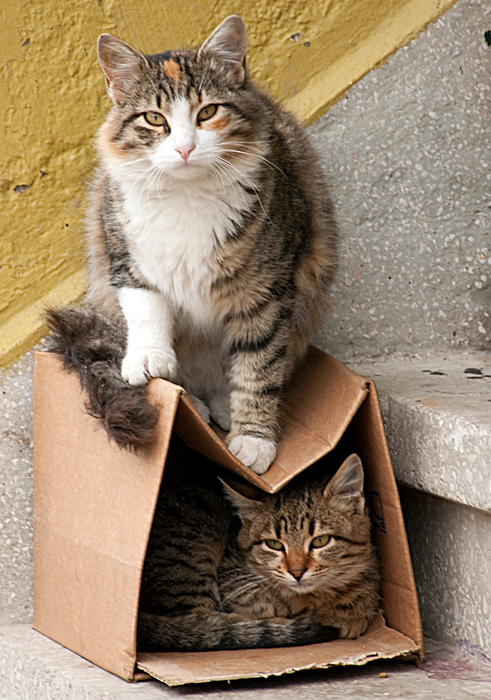
When Mama spied my interest in her kitten and its bed, she stalked over, got into position and glared at me.
It was originally the Ottoman fortress of Kale-i Sultaniye, which later became known for its pottery. Çanak kalesi “pot fortress”, became Çanakkale. The area also has distinctive rug motifs. We have a rug from mid-20th C. Çanakkale (although it doesn’t follow the motifs I see in my book on tribal village rugs), and some Çanakkale-style pottery.
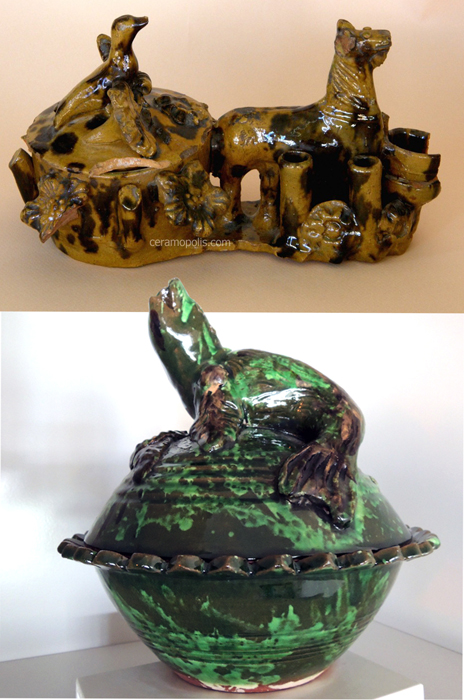
Top: 19th or 20th C., in a private collection in Athens Greece. Bottom: Adil Can’s interpretation of the style, which we purchased from his shop in Iznik. Jim is partial to seals…
We booked a tour to visit the battlegrounds of the Gallipoli Peninsula. Çanakkale gets tourists from Australia and New Zealand who are visiting the graves of the fallen ANZAC (Australian/New Zealand Army Corps) soldiers during World War I.
The Ottoman Empire, considered the “sick man of Europe” prior to the war, commissioned and paid for two battleships from Great Britain. At the onset of the war, Britain requisitioned those ships for their own use, so the Germans stepped in and provided two cruisers. The Ottomans allowing those ships to pass through the Dardanelles violated international law as a neutral party, and the Ottoman Empire became allied with Germany.
In Black Sea “exercises” with the new ships, the Ottomans attacked Russian ports. The British and French seeking a route to Russia and to attack the Ottoman capital of Constantinople fought the Ottomans on the Gallipoli Peninsula. Early in the war, a month before the Battle of Gallipoli, the Allied sea campaign to sail up the Dardanelles failed.
We asked Australians on our tour why Australians and New Zealanders would be fighting at Gallipoli? They said the young kids volunteered for the adventure and to see the world.
Basically, the peninsula was a slaughter ground for the ANZAC and the Turks. ANZAC held the high ground for just two days, before the founder of modern Turkey, a young, smart General Mustafa Kemal, later called Atatürk (Father of Turkey) defeated them.
The tour stopped at ANZAC Cove first. It is a beautiful knoll overlooking the sea, with colorful flowers among the gravestones. Understanding that the soldiers were there voluntarily, I was dismayed at the sentiments on the markers. Of course, the families choosing them had to live with the reality, and I viewed the day through the filter of my politics. I hate war. I believe it largely unnecessary, but it is the obvious and often profitable route to gaining power and dealing with differences. I also dislike the multi-leveled rationalization that inevitably goes along with it. Unfortunately, I also don’t think it will end, certainly not in my lifetime. I am afraid war might be integral to the human species, its weak link.
At Johnston’s Jolly, named for Australian Brigadier General George Johnston, fighting occurred in April and May, and then again in August. The no-man’s land was narrow, the space between opposing trenches was close. When not fighting, soldiers from both sides shared food and provisions by tossing them back and forth between the trenches.
There was another story of cooperation, at the same location. On May 24 2015, there were so many rotting corpses on the battlefield from previous days’ fighting, that a truce of 9-1/2 hours was called, to bury the dead.
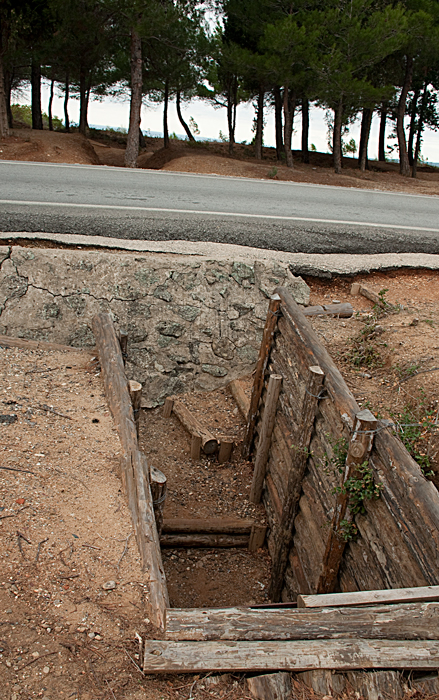
This is Johnston’s Jolly. The trench in the foreground is Turkish, the 2 lane paved road was no-man’s land. Allied trenches began at the edge of the road on the other side.
Words from those who were there…
“This whole operation was a strange experience – here we were, mixing with our enemies, exchanging smiles and cigarettes, when the day before we had been tearing each other to pieces. Apart from the noise of the grave-diggers and the padres reading the burial services, it was mostly silent. There was no shelling, no rifle-fire. Everything seemed so quiet and strange. Away to our left there were high table-topped hills and on these were what looked like thousands of people. Turkish civilians had taken advantage of the cease-fire to come out and watch the burial. Although they were several miles from us they could be clearly seen.
The burial job was over by mid-afternoon and we retired back to our trenches. Then, sometime between four and five o’clock, rifle-fire started again and then the shelling. We were at it once more.” [Albert Facey, A Fortunate Life, Ringwood, 1984, p.268]
and…
“The time was taken up by making friends with the Turks, who do not seem to be a very bad sort of chap after all. After today most of our opinions on the Turks were changed …”[De Vine, quoted in Bill Gammage, The Broken Years, Ringwood, 1990, P 104]
Climbing back on the bus at Johnston’s Jolly, disgusted at the idiocy, violence, waste and irony of it all, I said “aptal savaş” (stupid war). Heads nodded.
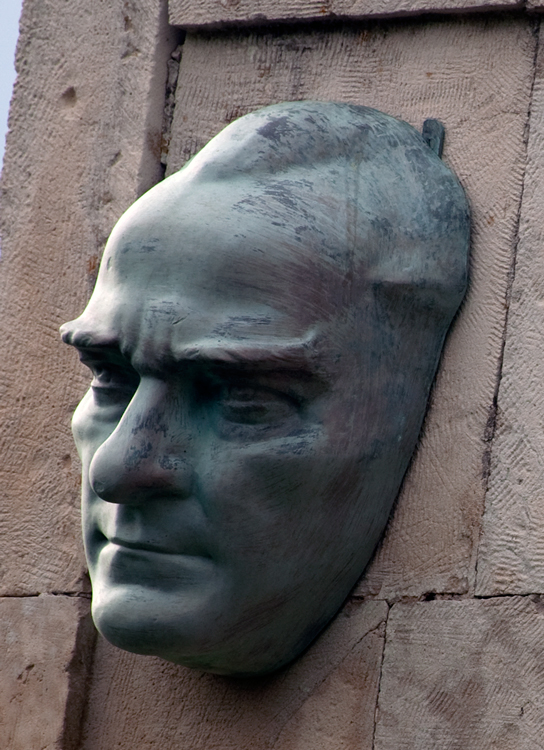
A strangely protruding cast of Atatürk’s head affixed to the memorial at Anzac Cove. His 1934 statement: THOSE HEROES THAT SHED THEIR BLOOD, AND LOST THEIR LIVES …
YOU ARE NOW LYING IN THE SOIL OF A FRIENDLY COUNTRY.
THEREFORE, REST IN PEACE.
THERE IS NO DIFFERENCE BETWEEN THE JOHNNIES
AND THE MEHMETS TO US WHERE THEY LIE SIDE BY SIDE,
HERE IN THIS COUNTRY OF OURS …
YOU, THE MOTHERS, WHO SENT THEIR SONS FROM FAR AWAY COUNTRIES …
WIPE AWAY YOUR TEARS.
YOUR SONS ARE NOW LYING IN OUR BOSOM AND ARE IN PEACE.
AFTER HAVING LOST THEIR LIVES ON THIS LAND, THEY HAVE
BECOME OUR SONS AS WELL.
…is inscribed on the large stone monument that sprouts this head.
All over the peninsula are memorials built and exquisitely maintained by the international Commonwealth War Graves Commission. Our guide, Bulent, went into great detail about each. For me, though, one memorial looked like the next. The weather was grey and, despite my new coat, cold. The scenery of the peninsula and the Dardanelles is beautiful, but at the stops that didn’t promise different pictures, I stayed on the warm bus and practiced my Turkish with the driver. He was a good teacher, who told me that since I’d been here for a year, my Turkish wasn’t good enough and I should get a new Turkish teacher. I told him it wasn’t Elif’s fault, that I didn’t do enough studying. (The driver did not speak English. So, clearly my Tarzan Turkish is somewhat serviceable).
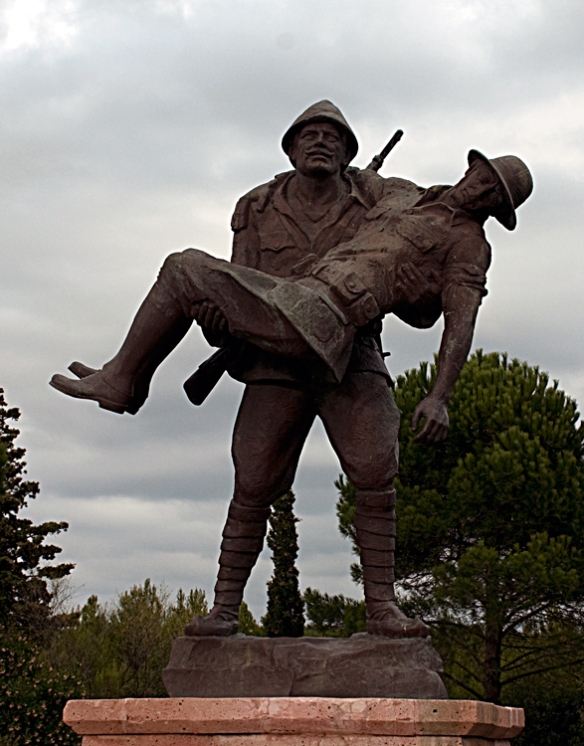
Another ironic memorial to the absurdity of enemies who had developed a fondness for each other, but kept doing their dirty job of war anyway…This Turkish memorial of the Unknown Soldier refers to an incident where in a lull in fighting, a Turk carried an injured British soldier from the Turkish trench, across the battlefield to the Allied trench, gave him to his compadres, and then returned to his own.
Çanakkale is at the narrowest point of the strait and the tour involved short ferry rides across the Dardanelles between it and Eceabat. Once back in town we had a truly excellent seafood dinner at Yalova Restaurant and got up the next morning to drive to Assos.
Traveling in Turkey is very easy to arrange. There are highly suitable hotels everywhere. Driving in Turkey is challenging because many roads are under construction, directional signage is poor and maps, including GPS and Google, are inadequate. Plus, Turkish drivers have their own way of doing things…sort of like those in Boston, and one has to stay alert. In the future we will seek to combine drivers and guides, all readily available and of reasonable price, as we seek to explore this fascinating country with its deep history of humanity.
Turkey is delightfully Eastern and exotic, yet very familiar and comfortable too. It reminds me in many ways of the US. There is a great variety of terrain and culture, some of it very dramatic, a lot of it just gorgeous and interesting. I’ve seen amber waves (not on this trip), purple majestic mountains and spacious skies.
I will describe the rest of this road trip in another post.
Should an ad follow, it is because I am using the free version of WordPress. Despite that I made my living in advertising, you may feel free to ignore it.



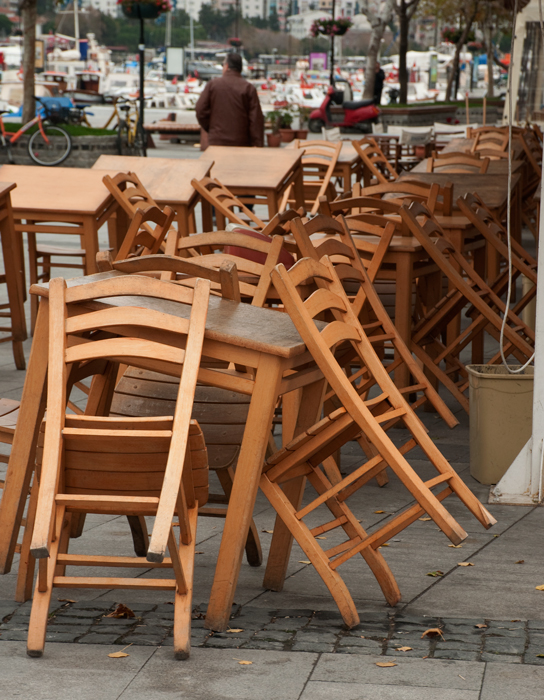
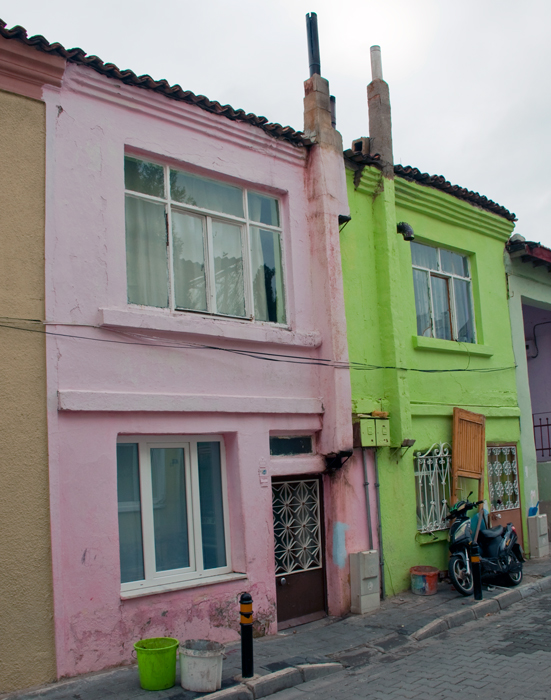
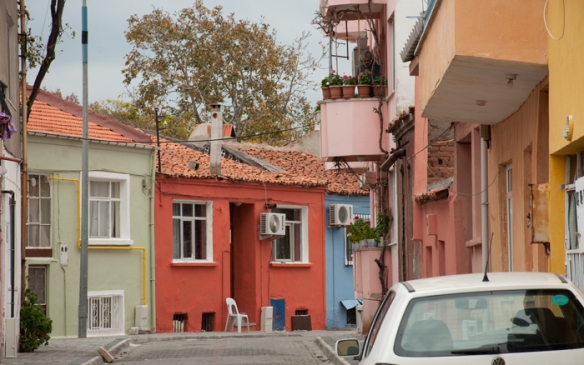
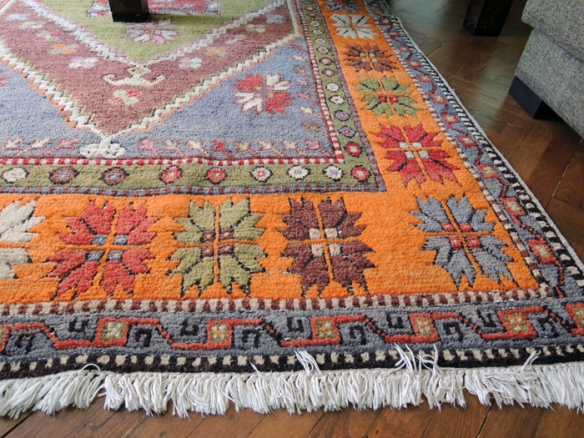

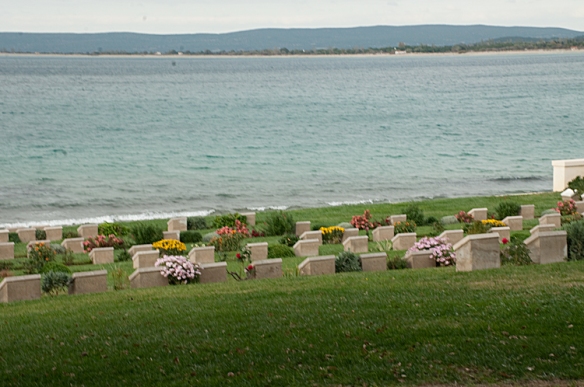
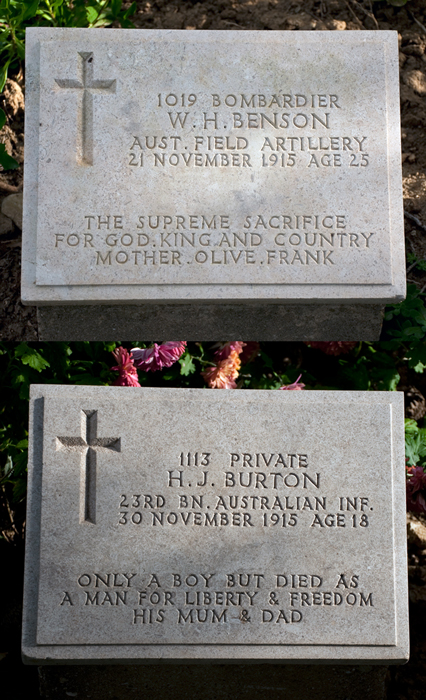
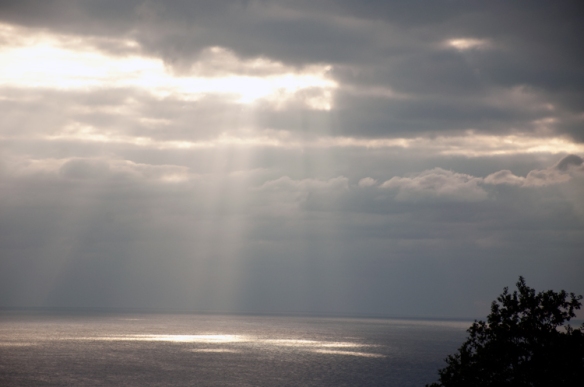
Great post. We went to Canakkale a couple of months back but we missed out on Gallapoli, we opted for Troy instead as we were pushed for time. You have made me want to go back!
LikeLike
Ginny, thanks for the little windows of life in Turkey you provide with your descriptive blogs..
LikeLike
Wonderful description and photos. Great trip and thanks for the history lesson.
LikeLike
I didn’t realize this is where you went! Just this week I was talking to an Australian colleague about Gallipoli. The way she talked about it reminded me of the way that I’ve heard Americans talk about Normandy. I’d love to go there. Great history lesson and beautiful photos, as usual.
LikeLike
Ginny: You spoil us with your descriptive narrative and vivid photos; and have allowed us to share yet another Turkish experience with you. Thank you! 😘. Lu
LikeLike
I like so much Turkey 🙂 fortunately have family there 🙂
LikeLike